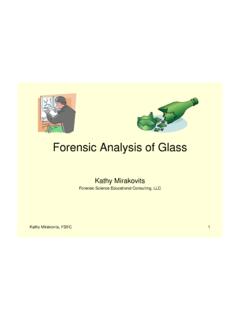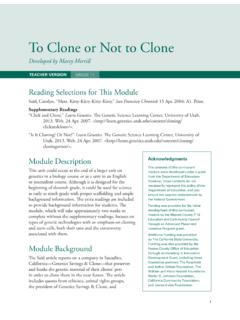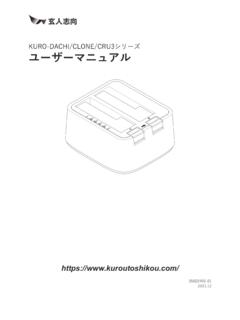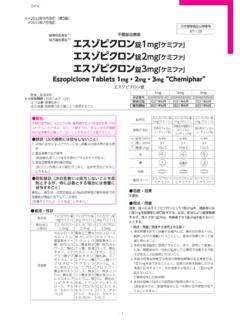Transcription of Teacher Guide: Let’s Clone a Mouse, Mouse, Mouse
1 Genetic Science Learning Center, 15 North 2030 East, Salt Lake City, UT 84112 2002 University of Utah guide : Let s Clone a Mouse , Mouse , Mouse ..Abstract:Somatic Cell Nuclear Transfer (SCNT) is a cloning method that involves transferring a nucleus from a somatic cell of the individual to be cloned to an enucleated egg. This activity simulates, step-by-step, the Honolulu technique for SCNT used by researchers at the University of Hawaii. It allows students be the scientist and carry out SCNT via paper illustrations. Module:Cloning in FocusKey Concepts:Somatic cell nuclear transfer, cloning, somatic cell, enucleated cell, morula, artifi cial embryo twinningMaterials:Student handouts, scissors, tape, crayons/colored pencils/markersPrior Knowledge Needed:At least a basic knowledge of cell structure and the function of the nucleus and cytoplasm.
2 The nucleus contains the information (DNA, in the form of genes on chromosomes) related to inheritance of traits. The cytoplasm contains the machinery (organelles, proteins, etc.) for the cell to carry out its functions. Artifi cial embryo twinning is a technique in which a very early embryo is manually separated into individual cells, each of which develops into a twin . Appropriate For:Ages: 12 - 16 USA grades: 7 - 12 Prep Time:30 minutes (copying and review time)Class Time:45 - 70 minutesActivity Overview Web Address: OVERVIEWO ther activities in the Cloning in Focus module can be found at: Science Learning Center, 15 North 2030 East, Salt Lake City, UT 84112 2002 University of Utah guide : Let s Clone a Mouse , Mouse , Mouse .
3 TABLE OF CONTENTSP edagogyA. Learning ObjectivesB. Background InformationC. Teaching StrategiesPage 1-3 Additional ResourcesA. Activity ResourcesB. Other Resources3 MaterialsA. Detailed Materials List4 StandardsA. National Science Education StandardsB. AAAS Benchmarks for Science LiteracyC. Utah Core Curriculum4-5 Teacher ReferencesA. Annotated Procedure6-9B. Answer Key10-11 Student Handouts Activity Instructions S-1,2 Activity QuestionsS-3 Mice Cut-outsS-4 Lab Benchtop S-5 guide : Let s Clone a Mouse , Mouse , Mouse ..I. PEDAGOGYA.
4 Learning Objectives Students will be able to explain, step by step, the Honolulu method of cloning. Students will be able to differentiate somatic cell nuclear transfer from artifi cial embryo twinning. Students will exercise hand-eye Background InformationClones are produced naturally when the cells in a developing zygote become separated after the two-cell stage. The two cells (or two groups of cells) develop into identical artifi cial embryo twinning, a very early embryo is separated into individual cells in a Petri dish in a laboratory.
5 Each cell is allowed to divide and develop on its own and then implanted into a surrogate mother. The resulting offspring are genetically identical (clones) since they all came from the same zygote. Somatic cell nuclear transfer is used to create a Clone from an adult organism. DNA from a somatic cell taken from the adult is injected into an unfertilized, enucleated egg and then implanted into the uterus of a surrogate mother. The resulting offspring is a Clone of the adult DNA is important for students to understand the difference between artifi cial embryo twinning and somatic cell nuclear transfer.
6 Both techniques produce clones. However, artifi cial embryo twinning does not preserve the genotype of the adult parent while somatic cell nuclear transfer does. In artifi cial embryo twinning, recombination between each parent s chromosomes occurs during formation of the egg and sperm that are united to form the egg, which is then split to create twins. No recombination occurs in somatic cell nuclear transfer since the nucleus of a somatic cell (which has a diploid number of chromosomes) is used to create the initial egg . Artifi cial embryo twinning is a form of sexual reproduction while somatic cell nuclear transfer is a form of asexual additional information see What is cloning?
7 , available on the Genetic Science Learning Center website at Science Learning Center, 15 North 2030 East, Salt Lake City, UT 84112 2002 University of Utah Page 1 of 11 guide : Let s Clone a Mouse , Mouse , Mouse ..C. Teaching Strategies1. Timeline Day before activity:- Make photocopies of the student handouts on white paper- Gather scissors, tape and crayons/colored pencils/markers Day of activity:- Discuss cloning and the difference between artifi cial embryo twinning and somatic cell nuclear transfer- Have students carry out the simulated cloning activity- Discuss the questions at the end of the activity2.
8 Classroom Implementation Begin by discussing the science of cloning, differentiating between artifi cial embryo twinning and somatic cell nuclear transfer. You may want to use the information and animations in What is Cloning ( ) To carry out the simulated cloning activity:- Divide students into groups of three. - Have each student in a group choose an adult Mouse . - Follow the instructions in the student handout to carry out the cloning procedure. - See the Annotated Procedure (pages 6-9) for more detailed instructions and additional Background Information relevant to each step.
9 You may choose to share this information with your students, if appropriate or in response to their questions. When students have completed the activity, assess their understanding using the questions at the end of the activity (see Assessment Suggestions, below).3. Adaptations Lead students through the steps of the procedure using the Click and Clone interactive animation ( ). View a step and then have students carry it out with their paper materials. Enlarge the illustrations for ease of handling. Use real Petri dishes instead of the paper ones on the Lab Benchtop.
10 Have students attempt to remove the nuclei while viewing the cells through a dissecting microscope. Have students use forceps to hold the cell while they are cutting out the Science Learning Center, 15 North 2030 East, Salt Lake City, UT 84112 2002 University of Utah Page 2 of 11 guide : Let s Clone a Mouse , Mouse , Mouse ..4. Assessment Suggestions Use the questions at the end of the student handout for assessing students understanding of the cloning process (Answer Key on pages 10-11). Suggestions for using these questions include:- Have students discuss the questions within their small groups and then as a Discuss the questions as a Have students individually write answers to the questions and then discuss them as a class.





